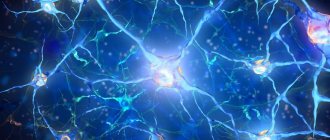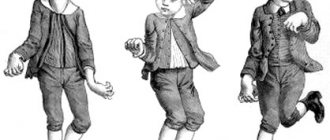Prerequisites
The exact reason why Alice in Wonderland syndrome develops is unknown in medicine.
However, there are a number of factors, according to doctors, that provoke this disorder. In most cases, the formation of Alice in Wonderland disease is associated with concomitant pathologies, in which patients’ perception of the world around them changes. Possible causes of micropsia and macropsia:
- Migraine. The systematic development of debilitating headaches leads to a distorted perception of the surrounding reality. At first, the disorder appears only during migraine attacks. If it occurs regularly, attacks of pathology also develop at the same time.
- Schizophrenia. This mental disorder is accompanied by a distortion of perception. At the same time, the patient often has the feeling that he is not who he really is. The disease is considered severe and difficult to treat. Often therapy is reduced solely to eliminating symptoms.
- Altered state of consciousness. Attacks of Alice Through the Looking Glass syndrome often develop in people experimenting with substances that affect the perception of the world. These drugs include drugs and some types of alcohol. Also, a distortion of the worldview is achieved by prolonged refusal of sleep, the use of hallucinogenic mushrooms, herbal mixtures for smoking, and breathing practices.
- Brain diseases. Various pathologies of the brain centers responsible for the perception and processing of information received from the outside world can cause disruption. Possible diseases causing the syndrome include brain cancer, mononucleosis, and epilepsy.
In general, macropsia or micropsia in an adult develops due to disruption of the centers responsible for perceiving the surrounding world.
About the reasons
The exact causes of micropsia are being clarified. It is believed that there is a high probability of a connection with genetics and heredity. Doctors pay attention to several reasons causing the development of AIWS.
It has been found that micropsia can be a separate neurological disorder or one of its symptoms, as well as a concomitant pathology with certain mental disorders.
These include the following diseases:
- Migraine . The most common cause of Lilliputian vision. It manifests itself in attacks of intense pain in one half of the head. Scary tale symptoms usually precede the attack, resulting in hallucinations and metamorphopsia, a condition in which there is a false perception of the color, shape, size and movement of real objects.
- Epilepsy . A mental disorder that is expressed by sudden, very strong convulsions with loss of consciousness. The disease can also cause strange visions and auditory hallucinations.
- Schizophrenia . A severe mental disorder that manifests itself in a variety of forms and is associated with disruption of the processes of thinking, perception, and emotions.
Sometimes the causes of micropsia can be:
- Mononucleosis . An acute infection, the development of which is provoked by the pathogenic Epstein-Barr virus. Leads to damage to the lymphatic system and disruption of the functions of the higher cerebral parts.
- Neoplasms and tissue damage in the crown area . Tumors of any origin can put pressure on certain areas of the cerebral cortex, causing disturbances in the thought process and unrealistic, bizarre visions.
- Exposure to certain substances taken by a person, for example: hallucinogenic drugs (Morphine, cough suppressant Dextromethorphan with a morphine-like component); psychedelics (LSD, alkaloid psilocybin); marijuana and other types of drugs. All signs disappear after metabolic products are removed from the blood, but significantly weaken the psyche.
If a person’s syndrome manifests itself briefly, in episodes, disappearing on its own, this is a good sign, meaning that, most likely, there are no serious pathologies. But medical practice has recorded case histories when the condition lasts for several years.
Clinical manifestations
The pathology occurs in the form of attacks. The frequency of their occurrence, as well as the duration, differs depending on many factors. There are cases where the attack lasted more than a month. However, the disease can manifest itself for several minutes.
Signs of pathology:
- Changes in the size of surrounding objects (increase with macropsia or decrease with micropsia).
- Distortion of the distance between objects.
- The appearance of a difference in proportions between surrounding objects.
- Disorientation in space.
- Distortion of time perception.
- Memory losses.
- Feelings of anxiety, fear, panic.
- Inability to coordinate actions.
- Headache.
- Fever.
- Cardiopalmus.
- Excessive sweating.
One of the features of the described syndrome is that a distortion in the perception of the environment occurs in the patient even if he is in a supine position with his eyes closed. In this way, an ophthalmological abnormality is excluded.
Alice through the looking glass syndrome is accompanied by a number of severe symptoms that are paroxysmal in nature.
How does the syndrome manifest?
Alice in the Wonderful World syndrome manifests itself in the form of sudden attacks that can last a few seconds or minutes, like a strange dream, up to several hours and even weeks when the person's mental state is under great stress.
An unpleasant property of the syndrome is that it overtakes the patient even if his eyes are closed. This is yet another additional confirmation that the disease has nothing to do with vision, but is only an unsuccessful fruit of a mental-cerebral “symbiosis.”
The attack is usually accompanied by the following unpleasant conditions:
- loss of orientation in space;
- a feeling of gaps in time, which either speeds up or slows down;
- fear, depression;
- agnosia, or the inability to recognize people and objects, although there are no impairments in the visual or auditory systems;
- impaired ability to follow a sequence of actions.
As a rule, the main symptoms are accompanied by symptoms of a panic attack:
- pressing, squeezing pain in the head;
- increased, strong heartbeat (tachycardia), pulsation in the temples;
- a sharp (over several minutes) rise in pressure;
- arrhythmic phenomena (pauses in myocardial contractions), causing an additional feeling of fear of death;
- rapid breathing, yawning and sighing, indicating hyperventilation;
- feeling of suffocation;
- trembling of the fingers, a tingling sensation in the tips up to a strong burning sensation (a consequence of the powerful release of adrenaline by the adrenal glands);
- intestinal and stomach cramps, diarrhea.
Article on the topic: What is hemophilia - definition, signs and causes of the disease, diagnosis and treatment methods
There may be other components of a panic attack, which is dangerous mainly due to a sharp “jump” in blood pressure.
Diagnosis and treatment
To make a diagnosis, it is enough to study the patient’s complaints. There are no neurological disorders with a similar clinical picture, and therefore the possibility of misdiagnosis is extremely low. Some types of examination of the patient are used to determine the causes of the pathology. These include tomography, encephalography, and laboratory analysis of cerebrospinal fluid.
The principles and methods by which micropsia is treated in a child and an adult are practically the same. It is necessary to reduce the stress load on the psyche and eliminate the maximum number of possible irritants. It is extremely important to maintain a sleep schedule, sleeping at least 8 hours every day.
First aid
If an attack occurs, there is a serious danger for the patient, especially if he is on the street. Disorientation in space and distorted perception of the world can cause injury or other damage. An attack in a child poses a great danger, since in childhood such pathologies can lead to disruption of the formation of mental processes and functions.
During an attack, you should take a comfortable position. It is recommended to do breathing exercises, as they help saturate the brain with oxygen. If necessary, take medications for migraines and high blood pressure. It is strictly forbidden to drive. If the victim is on the street, he should call a loved one who will take him home and help him calm down.
Use of medications
In psychiatry, there are no special drugs to eliminate seizures. A patient suffering from the syndrome is recommended to always have Corvalol or Validol with him, due to which normal heart function is restored during a panic attack.
The following groups of medications can be used for therapeutic purposes:
- Sedatives.
- Antidepressants.
- Tranquilizers.
- Vasodilators.
Pharmaceutical formulations are prescribed by the attending physician depending on the suspected cause and the individual characteristics of the patient.
Diagnostics
The neuralgic disorder in question is extremely rare. Diagnosis is possible only on the basis of the patient’s complaints and medical history. Due to the unique nature of this phenomenon, it is impossible to obtain the necessary information from either instrumental or laboratory research methods.
To determine the etiological factor and carry out differential diagnosis, it is important to prescribe a spinal puncture with the study of cerebrospinal fluid, electroencephalography and computed tomography.
Interesting Facts
Alice in Wonderland syndrome - an abnormal mental disorder received its magical name more than 60 years ago in honor of the strange beautiful fairy tale by Lewis Carroll, created by the author’s imagination back in 1865.
A “bewitched” person begins to see everything, as if through a crooked prism: the big - shrinks, the tiny - swells to incredible sizes.
In addition, the distances to objects also change. They can grow enormously - and then your own palm stretches out, touching the opposite wall, the window looks like a tiny luminous point somewhere at the end of the tunnel.
And a cockroach running in the distance turns into a monster, causing heart spasms with horror. The body reacts with the release of adrenaline, as an unhealthy psyche dictates.
Lewis Carroll
In general, and in particular, the picture observed by a patient with micropsia is similar to that described by Lewis Carroll. In the fairy tale, after a magical meal, a girl either shrank or grew in relation to the objects and living beings around her.
Psychiatrists believe that the writer, apparently, also suffered from this disease and recorded his own symptoms, which manifested themselves in migraine with aura (severe pain spreading to half of the head, which develops after previous neurological symptoms - “aura”).
And therefore, for some, the fairy tale about the girl Alice in a Wonderful Land causes not tenderness, but rejection with its phantasmagoria, characteristic of a sick psyche.
Typically, if micropsia is caused by a severe mental disorder, it occurs in childhood from 5 years of age, when the child begins to analyze and evaluate the world around him, and up to 13–14 with the gradual establishment of hormonal changes in puberty.
Dwarf hallucinations more often appear at dusk, a strange time of semi-darkness and blurred silhouettes, when the brain begins to experience a lack of visual signals about the exact size of surrounding objects. In some cases, micropsia is observed in adults.
Therapeutic measures
There is no treatment for micropsia as such. The disease is not associated with ophthalmological disorders, which means that an ophthalmologist will not be able to help a person restore vision. The brain misinterprets the information received and distorts what it sees. Only after eliminating the main cause provoking malfunctions in the brain can normal vision be restored.
The easiest way to cope with an illness caused by taking hallucinogens. After the effect of the drugs is completed, vision is completely restored. If there are no deep-seated lesions of the brain and central nervous system, then complications are excluded. Individuals who take hallucinogens on a chronic basis may have permanent visual disturbances.
Micropsia due to tumor processes is difficult to treat. Not all brain tumors are resectable. Only a specialist can give any prognosis in this case. In case of malignant brain damage, chemotherapy, ultrasound treatment, cryodestruction and other treatment methods that are acceptable in a particular situation are prescribed. In some cases, after removing cerebral edema, it is possible to reduce symptoms and restore clarity of vision.
Traditionally, Lilliputian vision offers methods used in the treatment of migraines. According to neurologists, micropsia affects the same parts of the brain as chronic headaches. Classic treatment is not always effective, but more often it gives good results and reduces the number and duration of attacks. Therapy involves:
- taking painkillers;
- use of non-steroidal anti-inflammatory drugs;
- If dizziness, disorientation and nausea are present, antiemetics are suggested;
- taking antidepressants.
How to quickly remove a boil on the eyelid?
Treatment is selected individually. For schizophrenia and underlying mental disorders, antipsychotics are offered.
Causes
Micropsia is a disease characteristic of children from three to thirteen years old; as a rule, after the end of puberty, attacks occur less frequently, and by the age of thirty they disappear completely. Therefore, if symptoms occur in a child, do not panic. This phenomenon has not been fully studied, so it is impossible to clearly and unambiguously determine the cause that gave rise to the symptoms. However, there are a number of factors that provoke the occurrence of the disorder:
- Epstein-Barr viral infections;
- malignant brain tumor;
- mononucleosis;
- epilepsy;
- fever;
- schizophrenia;
- use of hallucinogens;
- migraine.
It is also common to consider micropsia against the background of a mental disorder, and not as a separate stable disease.
Causes and manifestations
Attacks of Lilliputian vision are unusual for an adult. The problem most often occurs in children aged 3 to 11 years. The causes and mechanism of development of the pathology have not been fully established, and this complicates the treatment of the disease.
The disorder may result from:
- taking hallucinogenic drugs;
- schizophrenia and other mental disorders;
- growing brain tumor;
- Epstein-Barr viral infection;
- epilepsy and some other neurological disorders.
When using psychotropic drugs and hallucinogens, an attack can last only a few seconds.
Micropsia rarely occurs on its own. It usually appears against a background of persistent mental disorders.
The causes of micropsia lie in dysfunction of the brain and central nervous system. If the syndrome appears in childhood, then by the age of 30 the attacks disappear completely or become extremely rare. There are cases where distorted perceptions persist for life.
In a child, Lilliputian vision may intensify with the onset of darkness. Evening micropsies disappear with age. A pathological fear of the dark and nervous experiences on this basis can aggravate the situation.
Convergent visual dysfunction can be caused by various pathologies. Thus, head injuries or deep-seated lesions of the central nervous system can lead to Lilliputian perception. Despite the uniqueness of the disease, the exact principles and conditions for its development have not yet been established.
Symptoms
The most obvious sign of the disorder is a distorted perception of surrounding objects. Everything around seems small, almost like a toy. As a rule, there is a feeling that all objects are very far away. A person himself can feel like a huge giant in a cramped room. As a rule, this phenomenon is accompanied by disorders of auditory, tactile, taste and other types of perception.
During an attack, a person may become anxious, panicked, and afraid. It may be difficult for him to distinguish between reality and hallucinations. If micropsia persist for a long time, it becomes difficult for the patient to engage in usual activities, go to work, and communicate with loved ones.
Features of the symptoms of the disease
The manifestation of micropsia is that the patient periodically experiences attacks, during which a distorted perception of reality is one of the key symptoms.
Moreover, the disturbance of perception often concerns not only the visual side, but also hearing and touch. Such an attack can be either very short (up to a minute) or quite long, lasting up to a month.
At this time, the following symptoms appear:
- impaired ability to perform goal-directed actions;
- agnosia;
- restlessness, feeling of anxiety;
- loss of orientation in space;
- rapid breathing, tachycardia;
- distorted perception of a real object (sizes, proportions and distances between objects).
Sometimes a sharp migraine-type headache indicates an approaching attack. Severe fear from such a state, when the reality around is changing, can lead to the development of a phobic disorder.
Alice in Wonderland syndrome: photos and description of the main symptoms
In fact, such a violation may be accompanied by various symptoms. What does Alice in Wonderland syndrome most often look like? Its symptoms are the so-called macro- or micropsia. What it is?
Micropsia is a neurological condition that is accompanied by an almost complete distortion of spatial perception. For example, cars on the side of the road can become the size of a toy, and a small pebble on the road suddenly grows into a huge boulder. Moreover, walls can move towards each other, the floor can become vertical, chairs can move, fly in the air or even dance.
Against the background of such a disorder, visual perception can be distorted so much that a person completely loses control over reality.
Forms of the disease
Alice in Wonderland syndrome can take the form of micropsia and macropsia.
- Micropsia
presents as a disorienting neurological condition in which visual perception of surrounding objects is proportionally reduced. This phenomenon is also called “Lilliputian vision” or “dwarf hallucinations.”In fact, the syndrome has nothing to do with vision problems, since the deformations in this case are associated exclusively with the psyche, which imposes distorted tactile, auditory and visual hallucinations on the patient.
- Macropsia
, in turn, is a completely opposite condition and is characterized by an increased size of objects perceived by a person and even one’s own body parts.
These forms of disturbance in the perception of reality are also accompanied by temporal and spatial disorientation, loss of the ability to determine the real proportions and dimensions of objects. Socialization is very difficult, since it is difficult for a patient with this syndrome to go to work, communicate with friends, or simply go outside.
The bizarre hallucinations that arise during the phenomenon under consideration affect not only visual perception, but also all other senses. This is what creates difficulties with adequately assessing and taking any measures in a given situation.
Without outside help, the patient is not even able to cross the road at a traffic light or pedestrian crossing, since people and cars seem too big and too close to him.
Prevention
Yoga classes will help you cope with emotions during attacks and teach you how to control yourself
There are no specific ways to prevent Alice in Wonderland syndrome. As a rule, for this purpose, recommendations that are general for the prevention of all such conditions are used.
To prevent micropsia (macropsia) from appearing, you must:
- cultivate resistance to stress;
- have a full rest, walk in the fresh air, lead an active lifestyle - this will strengthen both physical and mental health;
- do yoga, meditate - this will help relieve stress, relax, and strengthen the nervous system;
- Eat right – your diet should not contain foods that can trigger migraine attacks.
Alice syndrome is not fun, it's dangerous
Through the Looking Glass syndrome, as a form of AIWS syndrome, may be:
- a separate disease;
- one of the symptoms of developing migraine;
- a sign of drug addiction;
- serious mental pathologies, epilepsy, brain tumors.
This mental disorder is dangerous when there are problems with the perception of the environment, when a person cannot distinguish reality from the world transformed by his psyche.
In addition to visual and auditory distortions, there is a loss of orientation in space and time. The lack of real guidelines aggravates the pathology, destroying the patient’s psyche.
Unable to assess the dimensions of objects, their distance, the patient is exposed to danger while on the street, where he loses support under his feet and is not aware of the approach of transport, other people, holes and any obstacles. He is not able to analyze the situation, assess the situation and take action, as a healthy person would do.
Macro and micro - two sides of the same violation
With micropsia, the patient sees surrounding objects as exaggeratedly small, as if they were toys—much smaller than their natural size.
The second form, more rare, but complementing the clinical picture of the disease, is macropsia. With it, the opposite clinical picture is observed, when a person perceives objects, and even his own arms and legs, to be enlarged in size. During an attack, surrounding things grow right before our eyes.
Both forms of pathology are often combined and completely disorientate the patient, affecting visual perception and touch. AIWS often causes auditory and olfactory hallucinations. As a rule, this is a borderline state with the development of epilepsy and schizophrenia.
All pathological changes that the patient observes with Lilliputian vision and its opposite form do not concern the organs of vision, but occur at the mental level. affecting only cerebral analyzers. A sick psyche imposes “disfigured” sensations and visions on a person. The brain, hijacked by a neurological disorder, receives correct information from the eyes but interprets it incorrectly.
This mental state usually manifests itself in the form of an attack and often happens unexpectedly.
The patient can see a tiny table where there is a huge cup of milk, along the edge of which a giant fly is moving. Neither micropsia nor its opposite form affects the visual organs, but only the cerebral analyzers.
What are the causes of the disorder?
Why do some people develop Alice in Wonderland syndrome? The causes of this disease may be different. To this day, research is being conducted to help clarify the mechanism of occurrence of such a disorder. Scientists have been able to identify some risk factors that may be associated with the occurrence of disorders:
- According to statistics, children under the age of 13 are more likely to suffer from such perception problems. As you get older, the attacks become less frequent.
- This syndrome often develops against the background of schizophrenia.
- Risk factors also include epilepsy.
- There is an assumption that the syndrome may develop after infection of the body with the Epstein-Barr virus.
- Sometimes the cause is mononucleosis.
- This condition may indicate the presence of malignant brain tumors.
- The disorder also sometimes appears due to the use of hallucinogenic drugs and narcotic drugs, including marijuana and LSD.
Unfortunately, it is not always possible to find out the causes of Alice's syndrome. Sometimes careful examination of the patient does not yield any results.
Forecast
To date, Alice in Wonderland syndrome is an insufficiently studied mental disorder, and therefore there is no unambiguous treatment regimen for this pathology. A competent approach to treatment and correctly selected medications help lengthen periods of remission and shorten the duration of attacks, which, in turn, facilitates the social adaptation of patients, expands their social circle, and restores their ability to work. However, it is not yet possible to completely cure the disease.
One of the most amazing, strange, inexplicable and unusual diseases is Alice in Wonderland syndrome, or micropsia. In this neurological condition, a person sees reality in a distorted way, not as it actually appears.
Signs of Alice in Wonderland Syndrome
This disease has many names - “Dwarf hallucinations” or “Lilliputian vision”. During the course of the disease, a person enters a state in which visual perception is distorted: objects appear smaller or larger than they are. For example, a cup standing on a table may seem larger than the table itself, a wall may seem horizontal, and a chair may seem like a small doll's chair. This state is very disorienting for a person, he loses control over reality. The surprising thing is that it occurs without any damage to the eyes - it is the mental perception that changes.
Alice in Wonderland syndrome can also go by another name: macropsia. In this state, a person begins to see objects as huge, and they can grow right before our eyes, which comes as a surprise to the patient himself. A speck on the floor may seem like a huge bump, the room the size of a football field.
There is an opinion that Lewis Carroll, the author of the book “Alice in Wonderland,” suffered from this disorder. It is known that micropsia is often accompanied, and the writer had migraines. However, there is no evidence for this point of view.
Alice in Wonderland syndrome - causes
It is believed that micropsia may act as a concomitant neuralgic disorder in mental illness or drug use. Common causes of this condition are considered to be:
- Epstein-Barr virus infections;
- dysfunction of the parietal region of the brain;
- malignant brain tumors;
- taking hallucinogenic drugs (for example, LSD);
- mononucleosis;
- epilepsy;
- schizophrenia;
- fever;
- migraine.
As a rule, micropsia is characteristic of children aged 3 to 13 years. The older the child becomes, the less frequent the attacks, and by the age of 25-30 the symptoms disappear completely.
Alice in Wonderland syndrome: treatment
An attack of micro- or macropsia can last from a few seconds to 2-3 weeks. This is not a reason to worry about the condition of the retina, but human safety is worth taking care of. Due to a sudden change in the picture, a person becomes disoriented, anxious, and sometimes panics from hopelessness. This raises a fair question: what to do to treat micropsia?
First of all, you need to see a good doctor. As a rule, the same drugs that help with migraines are prescribed to relieve symptoms, and they help many people. Some felt relief after taking any painkiller.
In addition, it is necessary to conduct a full examination and identify the true cause of this condition. Depending on what caused the development of Alice in Wonderland syndrome, different treatments may be prescribed, aimed at eliminating the main factor, rather than suppressing symptoms.
It is also recommended to take measures to normalize the daily routine: sleep at least 8 hours a day, eat three times a day at approximately the same time, exclude unhealthy foods and hot sauces, and maintain a drinking regime. In addition, a person needs support, and loved ones should always be on alert. As a rule, children are not too frightened by this condition if the symptoms are not too severe, but adults panic. It is important to avoid situations in which their illness could be dangerous - driving, rock climbing, on the open sea, and the like.
Depersonalization is combined with a violation of the body diagram, illusory perception of the surrounding space and psychosensory disorders.
In this case, the patient perceives the world through a distorted prism: small objects seem huge to him, and large ones seem very small.
Determining the actual dimensions of surrounding objects and the distance between them becomes a real problem, which significantly complicates life.
The phenomenon in question is more common in children aged 5 to 13 years, but sometimes adult patients are also encountered.
The nature of the syndrome is temporary and episodic, it appears and disappears suddenly, however, cases have been recorded in which a person has been susceptible to this disease for several years.
What to do with micropsia or macropsia?
Micropsia (macropsia) is treated purely individually. If the cause of the disease is discovered, therapy is aimed at eliminating it (at the same time, accompanying symptoms are also relieved). So, for migraines, painkillers and sedatives are prescribed, for epilepsy, relaxants and anticonvulsants are prescribed.
To lengthen periods of remission, patients are recommended to take a course of classes with a psychologist or psychotherapist. Such activities help reduce the severity of fears and relieve the depression that accompanies them.
The support of family and loved ones also plays a huge role in the treatment of the syndrome. Sick people should not be left alone with the problems that have befallen them, especially if the disease developed in childhood.
Sessions of hypnosis and cognitive behavioral therapy can enhance the positive effect of treatment.
Drug treatment
Drug treatment is used to reduce the severity of disturbances in the perception of reality. In the vast majority of cases, micropsia (macropsia) is treated with the following drugs:
- sedatives;
- antidepressants;
- benzodiazepines;
- nootropics.
What does a seizure look like?
In most cases, Alice in Wonderland syndrome is accompanied by seizures. They can last from a few minutes to several hours or even days. During this period, patients note a distortion of what they see: objects become either incredibly large or very small, and a distortion of proportions is observed. As in the famous book of the same name, it is very difficult for a person to distinguish imagination from reality: the images that arise in the brain are very real.
As a rule, such attacks are accompanied by a feeling of disorientation and fear. Often the main symptoms are accompanied by a strong heartbeat, rapid breathing and other components of a panic attack. Often the attack is preceded by a severe headache (according to statistics, many people with this disease also suffer from constant migraines).
How to get rid of pathology
To treat micropsia, it is first necessary to identify and eliminate its causes. A small child should be provided with maximum peace and care. He will need to rest more, get enough sleep and eat right. You should also take care that your baby is less nervous and does not get into various stressful situations.
Children who suffer from “Alice syndrome” are practically not afraid of anything. Their perception is slightly different, but children take it completely calmly. So parents should not worry too much about their child. His problem will go away within a few years. If necessary, you can also visit an ophthalmologist. We hope this information was useful and interesting.
We recommend reading: .
Brief historical background
Of course, such a disorder is very rarely recorded in modern medical practice. The first mention of disorders of this type appeared only in 1952 - they were described by Dr. Lippman. And already in 1955, thanks to the work of the Canadian doctor John Toll, more specific descriptions of the symptoms of the disease appeared. It was this specialist who first tried to find out the causes of the disorder.
There are rumors that Charles Lutwidge Dodgson himself, who is known in the world of literature under the pseudonym Lewis Carroll, suffered from this disorder. Some people claim that the author wrote his famous book “Alice in Wonderland” during such attacks. But in fact, there are no facts confirming that he has this disease, so, most likely, this is just speculation.
Signs
Micropsia is an amazing, strange and unusual disease in the world of medicine. Symptoms of micropsia can manifest in the following ways:
- objects seem smaller to the child than they actually are (for example, a table may seem larger than the spoon lying on it);
- vertical surfaces may appear horizontal and vice versa;
- stationary objects, such as furniture, may begin to move and circle around the room;
- as a result, there is a possibility of disorientation.
Are there effective treatments?
What should a person diagnosed with Alice in Wonderland syndrome do? Treatment, of course, exists, but, unfortunately, there are no drugs that can completely stop attacks. To begin with, doctors recommend undergoing a full diagnosis. If it is possible to determine the causes of disturbances in spatial perception and eliminate them, then there is a good chance that the seizures will disappear altogether (for example, patients are prescribed drugs for epilepsy, antipsychotics, and in the presence of a brain tumor, chemotherapy or surgery is performed). There is also evidence that migraine medications help some patients cope with attacks. Naturally, sessions with a psychoanalyst or psychiatrist will be needed - specialists will help the patient cope with emotional instability and depression due to attacks.
Treatment
Dr. Lippman was the first to recognize the existence of a disease associated with distortion of reality. This was written about in a journal about mental illness in 1952 (article “Hallucinations inherent in migraine”)
It is he who will compare the symptoms with the sensations that Alice experienced in Lewis Carroll's book.
Canadian doctor John Todd in 1955 described the causes and symptoms in more detail and came up with a name for the disease - Alice in Wonderland syndrome. In the journal of the Canadian Medical Association, he compared seizures with this syndrome to a funhouse and a distorting mirror.
Todd wrote that his patients complained of the perception of the body as too small or too large, the world seemed unreal and frightening to them. Also, together with other scientists, he analyzed the diary of the writer Lewis Carroll and discovered that he was prone to migraines. In connection with this fact, there was an assumption that the creator of Alice also repeatedly suffered from attacks of the syndrome in question.
The presence of a disease indicates that there must be a cure or, at a minimum, to alleviate the symptoms. It is important that when the first signs appear, you should contact a medical specialist to determine the cause and further treatment planning. Preventive methods are relevant when it comes to migraine etiology.
In this case, the following medications are applicable:
- anticonvulsants - valpreic acid and carbamazepine;
- antihistamines – veropamil, cyprheptadine;
- to stop the development of migraine - mitisegrid, dihydroergotamine, isometheptene, triptans.
In most cases, these measures are sufficient, but otherwise there is no specific treatment. If another disease or pathological condition is the cause of the syndrome, the root cause should be eliminated and micropsia (macropsia) will disappear on its own. Analgesics often help reduce the severity and duration of an attack.
Are there any physiological changes?
Of course, over the past decades, many studies have been conducted to explain the occurrence of such attacks. During testing, it was found that due to the disease there were no changes in the anatomy or physiology of the eyes, including the retina.
Thus, it was assumed that the human eyes work normally, transmitting the resulting images to the visual centers of the brain. The problem for a patient diagnosed with Alice in Wonderland syndrome is that the brain stops correctly interpreting the information it receives through the organs of vision.
Stages and forms
An attack accompanied by a distortion of reality occurs in several stages.
- The initial stage is characterized by the appearance of a headache or general anxiety with a gradual or sudden increase in symptoms.
- The main stage is accompanied by the most severe manifestations of pathology.
- At the final stage, the severity of symptoms decreases, patients experience fatigue, apathy, and drowsiness.
Depending on the clinical manifestations, Alice in Wonderland syndrome is divided into several types:
- macropsia, accompanied by a sudden strong apparent increase in surrounding objects and distances;
- micropsia, characterized by an apparent decrease in everything that surrounds a person.












